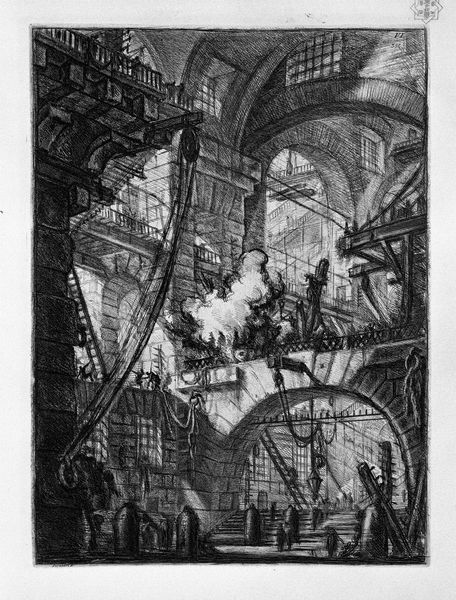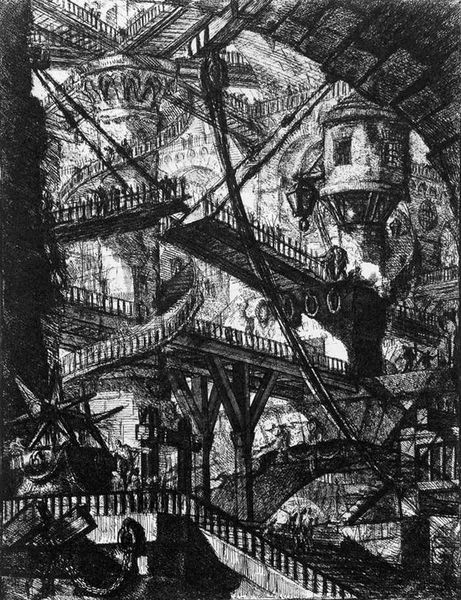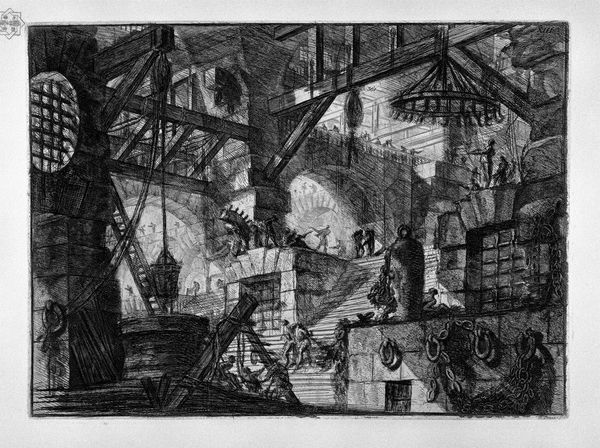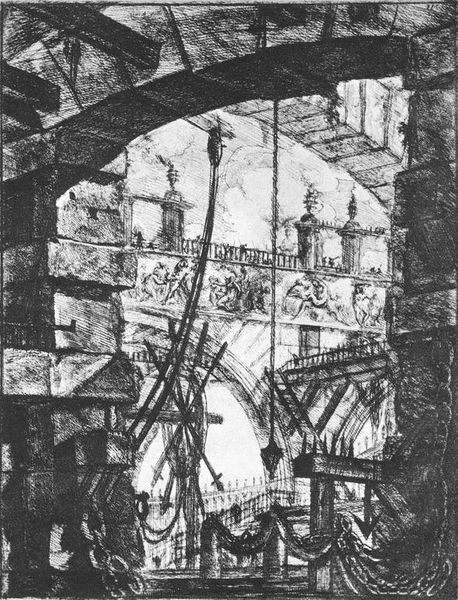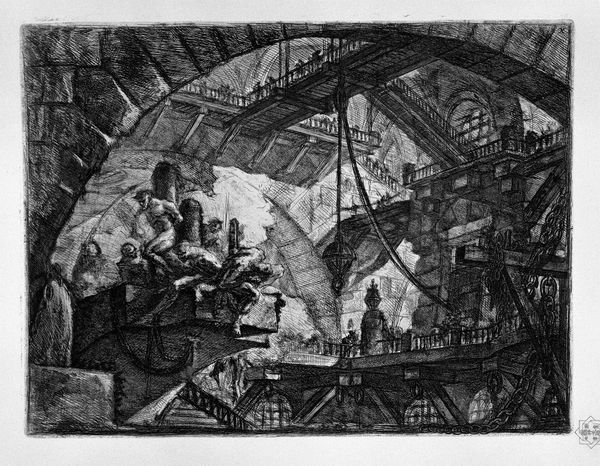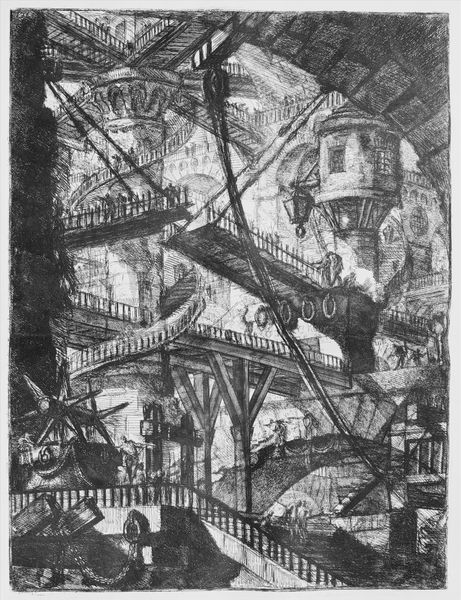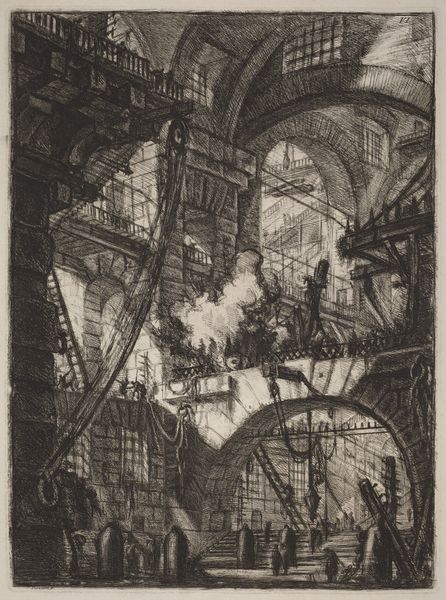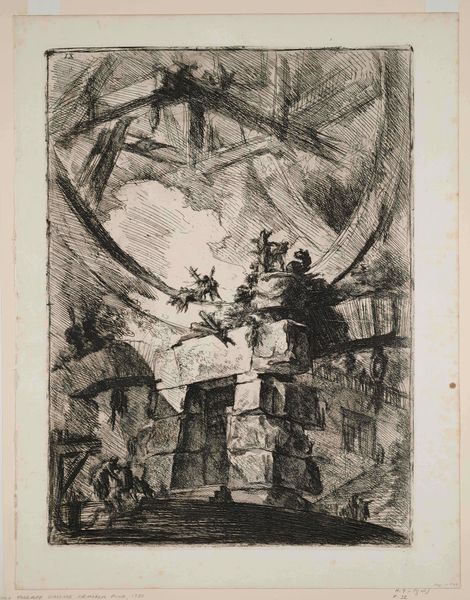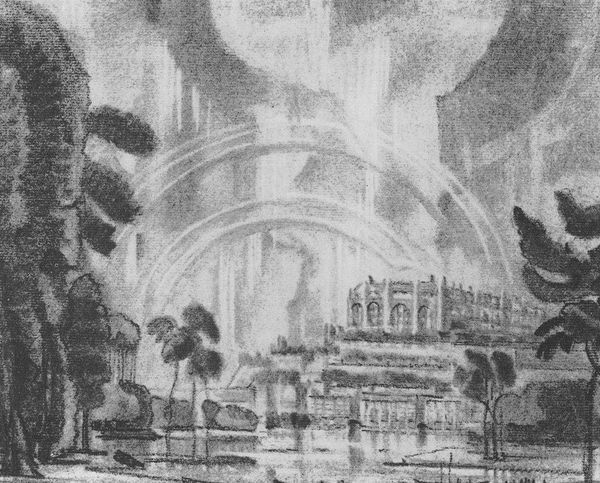
print, etching, architecture
#
narrative-art
#
baroque
# print
#
structure
#
etching
#
sculpture
#
fantasy-art
#
geometric
#
architecture
Copyright: Public domain
Curator: This etching, titled "The Prisons, Plate V," comes to us from the hand of Giovanni Battista Piranesi. Editor: My immediate impression is one of claustrophobia. It's this dizzying array of arches, scaffolding, and walkways… overwhelming. And look at that strange light, or maybe it’s smoke, billowing near the top! It's like a nightmare rendered in ink. Curator: It is indeed a powerfully disorienting image. Piranesi created these "Prisons" in the mid-18th century, a period rife with discussions about architecture's role in social control and public works programs. Editor: It’s fascinating to think about this as a commentary on labor too. The scale feels…inhuman. It dwarfs those tiny figures. Are they prisoners, or perhaps workers building this monstrous space? And I wonder what kind of industrial process is producing that smoke. Curator: That ambiguity is key, I believe. We can consider how Piranesi critiques the idea of rationally planned societies when such visions become spaces of confinement, no matter their utopian intentions. Notice, too, the layers of perspective tricks he uses. There are stairs that seem to lead nowhere and arches that conceal more architecture behind them. Editor: It certainly throws the idea of linear perspective right out the window, doesn't it? It creates a visual tension that’s very unsettling. It reminds me a bit of a factory, everything automated but where is the agency? I suppose architecture and design choices always implicate or control its users. Curator: Exactly. Piranesi presents an anti-monument, critiquing social engineering. Editor: What I am struck by, even just thinking about the production of this work as an etching, is how the crosshatching and deep shadows have to be achieved through incredibly exacting labor to construct and then print! It amplifies the sense of scale, while thinking about the intense time it took to realize it through production. Curator: Indeed. "The Prisons" speaks to enduring anxieties about progress and power. Piranesi captured that moment when the Enlightenment’s promise of order seemed to tip into something altogether more menacing. Editor: Absolutely. Thinking about how this maze of stone and shadow was itself laboriously produced really complicates my sense of awe—it’s as unsettling in its making as in its representation! Thanks for putting this in a helpful frame for consideration!
Comments
No comments
Be the first to comment and join the conversation on the ultimate creative platform.
